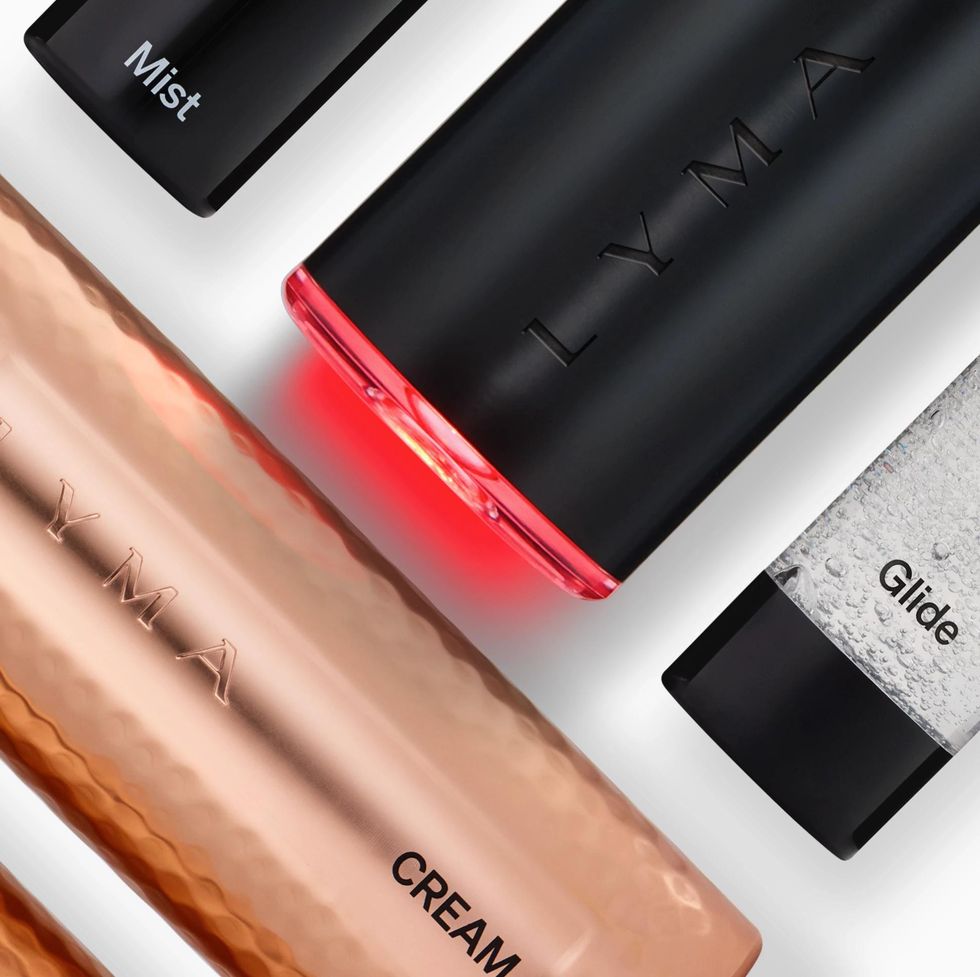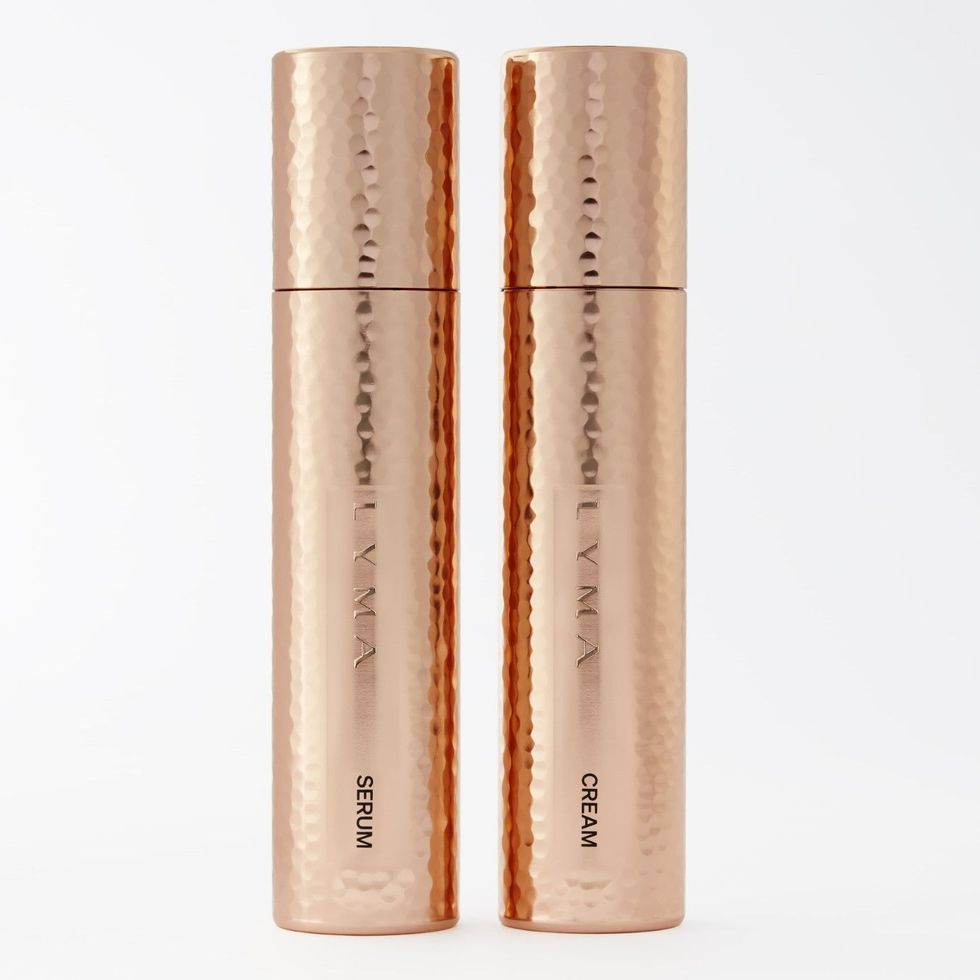The beauty tech boom shows no signs of slowing down, and there’s one innovation in particular that’s causing quite a stir in skincare-obsessed circles.
While LED masks and microcurrent have become staples in many beauty routines, the Lyma laser brings something completely unique to the space, claiming to take skin rejuvenation a step further.
A-list approval is high: Ana de Armas, Gwyneth Paltrow and Hailey Bieber are loyal users. Celebrity esthetician Joanna Czech is a long-time collaborator of the brand, while Amber Valetta recently signed on as the face of Lyma Skincare: a duo of products designed to be used alongside the Laser.
So what exactly is this buzzy device? It occupies a different space in the market than the brand’s debut product – a maximalist, holistic drink ambitiously named The Supplement – yet it takes the same do-it-all approach to deliver what the brand hopes will become the ultimate leather liner.
Here, read everything you need to know about the Lyma laser, from how the technology actually works, to the things it can (and can’t) have a tangible effect on…
What is the Lyma Laser?
The Laser is the world’s first medical-grade home laser device that combines four high-powered antibacterial blue LED lights with a laser beam to regenerate skin at the cellular level, rather than just spreading over the surface. The LED works on the top layers of the skin, killing bacteria that lead to breakouts, while the laser travels deeper to deliver long-term results.
“The Lyma laser works in a way that topical skin care simply cannot,” explains founder Lucy Goff. “It uses cool, near-infrared 500mW laser technology – a world first for home beauty devices – making it different from all other cosmetics. device and 100 times more powerful than LED. It’s a technology born out of the medical industry called low-level laser therapy (LLLT), which has been used for decades to treat a range of medical problems as diverse as cartilage reconstruction and tendon healing.”
LLLT technology was originally discovered by a medical research facility in Leipzig in the 1960s, when doctors found that low-level laser exposure could help heal wounds and rebuild cartilage after damage. This idea of building up the skin, rather than removing it, is what we hear most often today (Augustinus Baderhis famous cream was originally intended to treat burns) as the industry’s focus shifts from cosmetic beauty to tangible skin health: treating the root of the problem, rather than correcting the visible symptoms.
So far, so promising: but what skin problems can this technology really address with visible results? The brand claims the benefits are far-reaching, promising everything from firmer skin to luminous hyperpigmentation and even the smoothing of old scars.
How does the Lyma Laser work?
The continuous output (non-flashing) laser is able to penetrate deep into the skin, reaching the muscle layers. Here, it can “communicate” with mitochondria (the energy source of skin cells) giving them the power to accelerate the production of collagen and elastin. Like an energy bar for your skin, it revives the skin behaviors of our younger years – all done, according to Goff, “without damaging a single cell.” With regular use, inflammation is reduced, soft tissues heal more effectively, and the skin surface appears smoother and more unified in tone.
“As with most areas of our lives, we embrace technology to enhance or supercharge our routines, and that’s what advanced, proven beauty technology does,” says Goff. “Inherently, it reaches deep into the base layer of the skin, where the light energy activates a genetic switch within the skin cells that tells them not to die, but to recharge, regenerate and repair – the destruction of healthy skin cells is reversed. Externally, the laser’s light energy instructs existing cells to produce more proteins to fight free radicals: less free radicals equals more collagen and elastin.’
Lyma recommends using the laser regularly and consistently for best results: a 15-minute treatment every day for the first three months (and yes, you can do it while on the couch) before moving on to twice-weekly maintenance sessions. The device can be moved across the face or held still over specific patches of pigmentation, scars or acne. No glasses are needed and you’re not tethered to a cable, so the commitment to everyday use is realistic.
When treating the entire face, you may want to apply a conditioning serum, cream, or oil beforehand to allow the laser to glide over your face without tugging. Lyma recommends the use of the laser along with its own preparation products, although they are not necessary for the treatment: unlike devices such as microcurrent rods, the laser will be carried out with or without a previous application of skin care.
The brand’s Active Mist is a mineral-rich facial spritz that holds up to 100 times more oxygen than water. According to Goff, it “acts as an oxygen mask, with the right pH balance to penetrate the skin, nourishing the epidermis to increase cell turnover and deliver an instant firming hit.”
Then the Priming Serum (which contains moisturizing beta-glucans along with a proprietary Wellmune® compound), which Goff says “instantly hydrates skin 20 percent more than hyaluronic acid.” By activating macrophages (skin cells that fight bacteria) and stimulating fibroblast cells, it further enhances the laser’s collagen boosting abilities.
The laser is powerful but can be used around the eyes due to two internal diffusers that refract the beam and remove thermal energy. It is suitable for all skin types and tones and fits into any topical skin care routine without compromise.
Lyma laser: the Bazaar review
Indeed, using the Lyma laser is as elegant an experience as you’d expect for a device firmly in the investment category (the full Starter kit coming in at a whisker under £2000). The experience is undeniably refined: from the video tutorials run by top esthetician Nicola Joss on the brand’s website, to the heavy but silent operation of the laser itself, there are no corners cut here.
What’s more, the treatment is completely sensation-free, involves no pain or downtime (not even a hint of redness), and doesn’t follow the harm-recovery ethos that makes treatments like microneedling intimidating to some. Indeed, Goff adds that “traditional laser devices work through the stress/damage response, causing injury to the skin in order to stimulate collagen, but the Lyma Laser’s near-infrared beam is dispersed so many times – 25,000 times to be exact – that it removes all the heat, making it completely cold. We don’t rely on laser heat to damage the skin, but on near infrared cold technology to regenerate and renew.”
Determining whether the Lyma laser will be a worthwhile investment for you depends on the results you expect and the commitment you are willing to make. Consistency is really the key and you should set aside 15 minutes each day to use your device.
Over time, post-acne scars visibly fade and blemishes disappear. Skin generally looks and feels happier with diligent use: acne types become calmer and clearer, though rosacea won’t magically disappear (it’s a chronic skin disorder, after all). With slow, progressive improvements in tone and texture, skin takes on a firmer, brighter look that’s utterly subtle yet incredibly satisfying. If you’re looking for something that delivers better skin that lasts, this might just be it.




